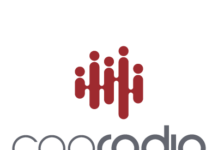
(By James Bahm) If your work involves building relationships in order to grow, it is essential that you understand how what it is you do (the products/services you offer, or the reason you want to meet) relates to the person you are reaching out to.
The reasons you give should have nothing to do with you, your company, the products/services you provide, or even your ratings or the size of your audience.
In some respects, meeting with a new prospect is similar to dating: You meet someone you really like, you focus all your questions and energy on getting to know what they like and enjoy, maybe talk with a few of their friends who can provide other insight, and when you have the opportunity to go on a date you make it all about them. If it goes well, you’ll have a pleasant evening characterized by meaningful conversation, which will lead to a second date.
When I worked for Xerox, I would roll my eyes at some of the marketing collateral that came out of Rochester. It contained plenty of information on the print speed, the dpi (Raise your hand if you ever obtained a printer because of its dpi! Now raise your hand if you know what dpi stands for!), and other specs and information that most of my clients or prospects did not care about.
One particular flyer was about the ColorQube and we were targeting churches and religious organizations as part of our endorsement with Catholic Purchasing Services. I actually reached out to someone in marketing and had them remove all references to dpi and a few other useless specs and, based on my conversations with end users and purchasing decision-makers, had them say this instead:
1) Simple-to-use and understand interface, making it easy for volunteers to operate.
2) Print in color for the same cost as black & white, reducing your operating expenses.
Neither of those was in this particular flyer, but both were extremely relevant to churches and schools with a tight operating budget. Someone thought that all the fancy technical jargon (which 99.2% of my clients would never care about or understand) was more important than how it can help improve their workflows and allow them to print the materials they needed in a cost-efficient manner. I was able to use the revised flyer to set a few appointments, and sold four ColorQubes over the next few months as a result.
And I’ve found this to be an issue for many companies.
Whatever marketing collateral your company produces, make sure you convey everything as it relates to your target customer. Talk to your sales staff who spend time listening to the needs of your customers. If your focus is to solve problems and fill needs, then talk about the problems you solve and the needs you fill. Client testimonials work well for that and help build (and establish) your credibility in the mind of the prospects you’re targeting.
If it includes a lot to industry jargon and company-specific acronyms, remove them. And with all due respect to some former colleagues, refrain from using language specific to your company/industry in a sales meeting. Rather, use jargon and acronyms specific to the client you’re meeting with and their industry. And if there is anything that you can’t easily explain, eliminate it. As Albert Einstein once said, “If you can’t explain it to a six-year-old, you don’t understand it yourself.”
I’ve worked in media for 15+ years and attended a lot of training classes. Someone once said of media outlets (but it’s true in most any industry), “Everyone is number one in something.”
I’ve since discovered that clients don’t care about me, my stations, or my company. Clients want to know that I listen to their needs and genuinely care enough to want to help. And that’s what they want in your marketing and advertising as well.
Don’t talk about anything that is not relevant to your target customer. They don’t care. If you want to take a meeting with more prospects, give them a reason to want to meet with you that is important to them. (Many sales trainers call this a “valid business reason,” and when given a valid business reason, many business owners will want to meet.) I use them daily with great success.
Regardless of what your industry is, the products/services you sell, if someone were to observe the initial meeting they should not be able to tell who the seller is and who the client is, because excellent selling means putting the client first and making your entire conversation about them and their needs by asking about what they do, not telling them about it.
It may take several attempts to get the first meeting, and you may need a few meetings to find a true need or two to address; and over time you’ll find that needs can frequently change. And that’s okay. Even after the best of first dates you can have several more dates over the next few months (or years) and continue to learn something new about the person you’re with every time you speak with them.
Bottom Line: Make sure your clients know how much you value them by keeping your message entirely about them and their needs.
Questions to Consider: What message does your marketing collateral deliver? Does it center on you, your company, and your products/services? Or do you show how what you provide will help your target consumer?
James Bahm is a 25-year broadcast veteran, an advertising and marketing resource, and owner of The Bahm Consulting.







